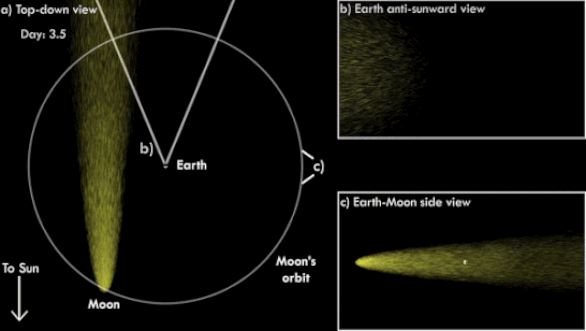Scientists say the Moon’s tail is invisible to the naked eye but appears on astronomical cameras, according to Live Science.
Like cosmic comets, our Moon also has a tail of irradiated matter. Each month, the Earth crosses this tail once.
This new information was described in the scientific journal JGR Planets in early March.
The Moon’s tail is a cluster of millions of sodium atoms emitted from the ground into space, caused by meteorite collisions. The solar radiation then pushes the material in a trail hundreds of thousands of kilometers long, forming a tail.
At the time of the new moon each month, when the Moon is between the Earth and the Sun, Earth’s gravity drives this tail in a band around the atmosphere like a scarf.
According to scientists, this moon tail is harmless to Earth and is invisible when seen with the naked eye. However, during a new moon, powerful telescopes can see a faint orange band of light in the sky.
The study authors described the tail as being opposite the sun, five times the diameter of the moon, and 50 times smaller than the human eye’s threshold of visibility.
“If a large enough asteroid hits the Moon with enough force, this sodium tail will most likely be visible to the naked eye from Earth,” Detective Agency planet scientist James O’Donoghue told The New York Times. Japanese Space Insurance.


